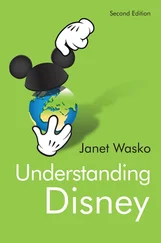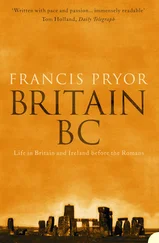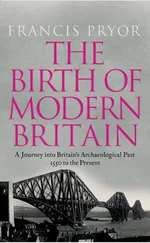Most of our housing schemes thereafter are logical improvements to this working-class pattern. Houses became larger; millions of us live in houses with two rooms and a kitchen downstairs, and two or three small rooms plus bathroom-and-toilet upstairs. Before the First World War someone invented the 'semi-detached house' which was still cheap to build but which allowed each family to reach the back of their house down a narrow side passage. This enabled men to carry sacks of coal to the back yard where it could be stored and used for the boiler and open fires. Since the nineteen-sixties, such houses have regularly been built with garages. Richer people kept to the same pattern. The later Victorians at the end of the nineteenth century built three-storey houses, but rarely higher. Such a house was intended for one large family with servants. Houses for richer people in the twentieth century had larger rooms and more land in the garden, but kept to the two- or three-storey pattern.
Today, with central heating built into all new homes, the 'two downstairs rooms' have often been knocked into one because we no longer need to keep a small space warm with an open fire. Sometimes the kitchen area is open to this large room. We have small entrance halls (the climate means that we rarely wear heavy winter coats and in any case we do not wrap ourselves up as Russians do, so we don't need much cloakroom space). Bedrooms have changed. They used to be used exclusively for sleeping. When I was growing up, my parents bought me a small oil heater so that I could do my homework in my bedroom without freezing to death while my brother and sister played downstairs. Nowadays, with central heating warming the whole house, bedrooms have been converted to bedroom-playroom-television looms, since the open-plan downstairs means less privacy.
All individual houses, whether joined in rows or standing detached, have their own back garden. However tiny, this is much preferred to communal land. We like to have our own fences, our own little garden shed and, preferably, our own strip of land outside our own front door. (This is one objection to flats by a nation of gardeners.) In the nineteen sixties, architects went against the instincts of the English, pulled down many rows of old Victorian houses and put up new shining blocks of flats. Within a few years many of these blocks had become slums, hated by the people who had been moved from the terraces. Many of these tower blocks have since been demolished and few blocks have been built since. Architects have gone back to semidetached and terrace houses, grouped in interesting patterns, each one emphasizing privacy.
Russians have a habit of describing anything built before about 1955 as 'old'. (So do Californians, and no doubt many other people.) In England a house does not qualify as old unless it was built at least a hundred years ago. We still have tens of thousands of really old houses, built between the fourteenth and eighteenth centuries scattered throughout the country. They may be inconvenient but richer people love to live in them so they become very expensive, even when they are quite small. Thousands of these older houses are strikingly beautiful and protected by law. At the other end of the scale are 'bungalows', small brick houses of only one storey, built especially for the elderly. Many older people move from a house into a bungalow.
I have written that we do not live in flats. To be more precise, most of us do not live in flats unless we are young or old or poor. Students and young people who are renting accommodation will often find a converted flat constructed inside one of the many houses built for a single family with their servants a hundred years or more ago. These houses are too big for today's family (with no servants!) so they are converted into three or four separate flats. The arrangement and size of rooms is often odd, but they have the advantages of ordinary family houses such as a garden. In many towns special housing is built for older people in three-storey flats. Nobody is very far from the ground and gardens, the styles are still intimate, but lifts and carefully designed doorways and so forth make these flats ideal for those who cannot move around easily. Those poorer people who live in council housing (municipal housing) are normally provided with a small house. If they are offered a flat, it will be in a building rarely higher than five storeys, and more likely four or three storeys.
Just as Russians can recognise the approximate date of a block of flats: is it a 'Stalin house' or a 'Khrushchev house' or a 'Brezhnev house'....? so the British can look at houses and tell you their approximate date. Anyone with a general interest in domestic architecture could probably guess correctly to within twenty years, the date of a building from 1800 onwards, by observing the materials, the proportions, the style, the details, the decorations. Typical materials depend on where in the country the house is built. Although brick is by far the commonest material for the walls, its colour will vary according to the local clays and sands, and in parts of the country the authorities still insist on using stone. Roofs may be tiled, or covered with different kinds of local slate. Flat roofs are very rare, concrete may be used for the basic frame but is otherwise despised, and wood is used for outer walls only if the owners are rich and can afford such special architecture. Your typical izba seems very exotic to us.
Because we mostly live in individual houses, we have a confusion of terms in translating to and from Russian. The English use the word house for a dwelling intended for one family. We would not describe a purpose-built block of flats as a house (although the whole building may be given a name such as 'Paradise House'). Hence dom has no exact equivalent in English. The word home is much more personal, much warmer than house: a 'home' is the place which you have created: not only its furnishings but also its atmosphere, your sense of other people who live in it, your feelings about its past as well as its present. Something of the Russian feeling about the privacy of kitchens is found in the English word home. Therefore a house, a flat, a caravan, a shed, or a castle can each be a home.
How we buy our houses
When I wrote the first version of Understanding Britain in 1991, I had to explain to my readers the concept of a 'housing market' in which houses are privately owned and are bought and sold according to the market price. At that time almost all Russians lived in municipal flats, but over twenty years you have become familiar with housing markets. Nonetheless there are differences between your situation and ours.
More than 70% of British householders own their own houses. The others live in rented accommodation, owned by the municipality (council housing) or housing associations supported by local government (about 20 %), or they rent from private landlords (about 8%).
The statement that 70% own their homes is, however, misleading because virtually all homes are bought on a mortgage which is a loan from the bank that must be paid off over a period of about 25 years. So a large proportion of the people who apparently own their homes are actually in houses owned partly by the bank. Few people who buy houses are free of mortgage payments until they are in their fifties, and many continue to pay for longer.
Suppose that you and your partner/wife/husband are aged 28 and you have been renting two rooms on the top floor (Russian third etazh) of a Victorian house for three years. You have saved some money and now you want to buy your own house in the same town. You go to the bank and find out how much the bank is prepared to lend you; the sum will be based on your incomes and prospects. You work out how much you will need for the deposit (let us say, 10% of the price of a house). Then you work out how much you can afford to pay each month for the remaining 90% of the cost plus the interest on the loan; then calculate the top price that you can afford for a house and resolve not to look at anything which is more expensive than your top price. You go to an estate agent to look at properties for sale within your price range. You visit three or four (or more) of them, and eventually decide to 'put in an offer' on a house that you like and can afford. If the sellers and you, the buyers, come to an agreement, you then return to your bank and ask for a loan so that you can pay the seller.
Читать дальше












